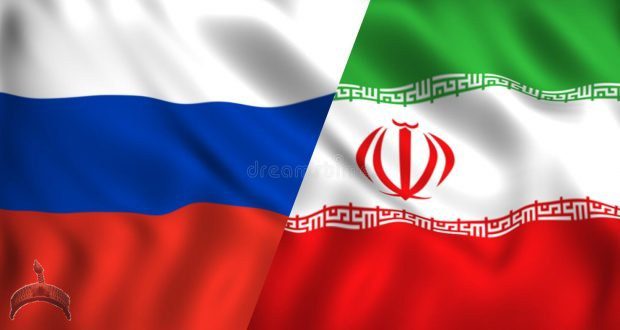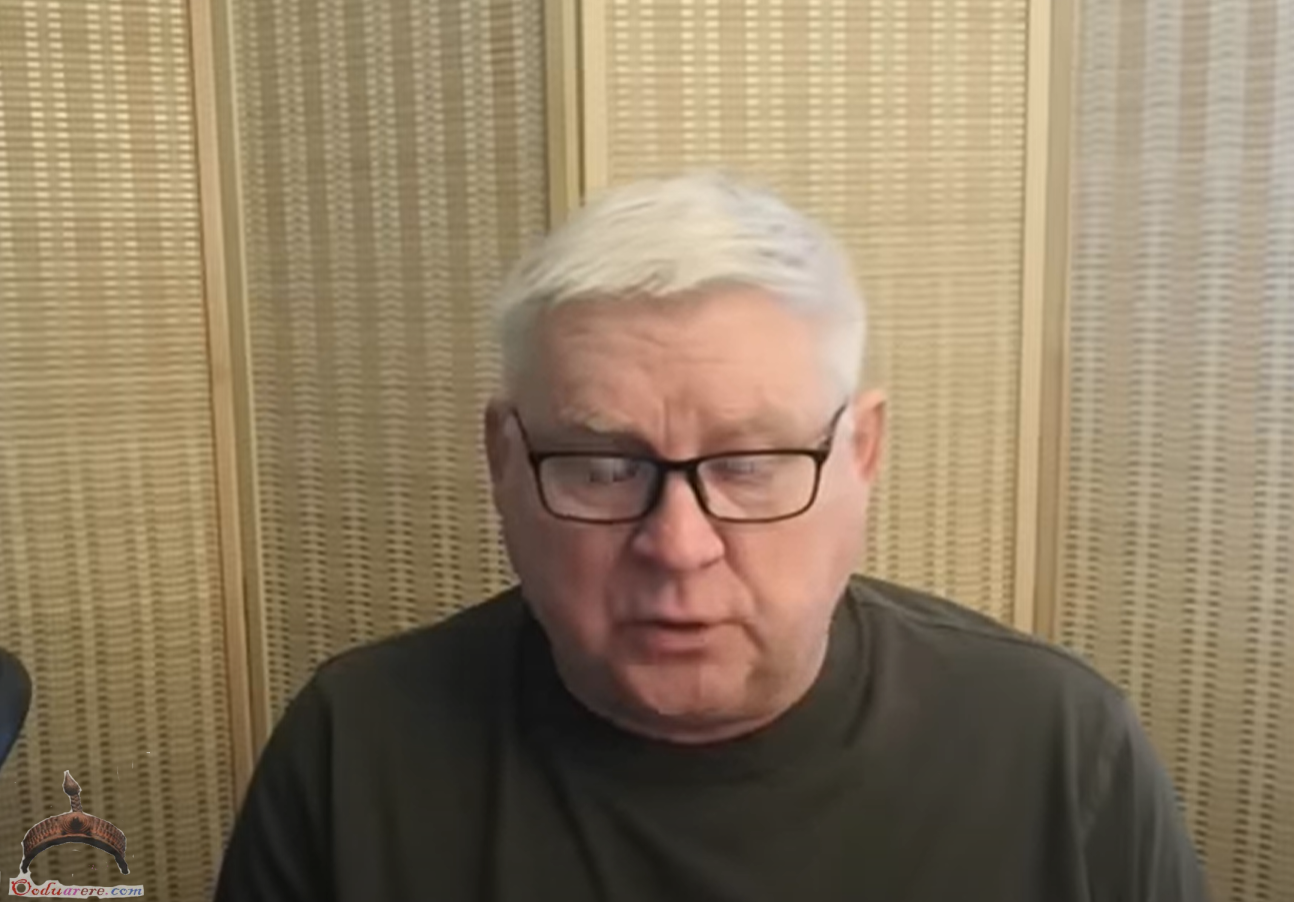by Pepe Escobar, first published at The Cradle and posted with the author’s permission
The meeting this week between two Eurasian security bosses is a further step toward dusting away the west’s oversized Asian footprint.
Two guys are hanging out in a cozy room in Tehran with a tantalizing new map of the world in the background.
Nothing to see here? On the contrary. These two Eurasian security giants are no less than the – unusually relaxed – Russian Security Council Secretary Nikolai Patrushev and Ali Shamkhani, the Secretary of Iran’s Supreme National Security Council.
And why are they so relaxed? Because the prospects revolving around the main theme of their conversation – the Russia-Iran strategic partnership – could not be more exciting.
This was a very serious business affair: an official visit, at the invitation of Shamkhani.
Patrushev was in Tehran on the same day that Russian Minister of Defense Sergey Shoigu – following a recommendation from General Sergey Surovikin, the overall commander of the Special Military Operation – ordered a Russian retreat from Kherson.
Patrushev knew it for days – so he had no problem stepping on a plane to take care of business in Tehran. After all, the Kherson drama is part of the Patrushev negotiations with US National Security Advisor Jake Sullivan on Ukraine, which has been going on for weeks, with Saudi Arabia as an eventual go-between.
Besides Ukraine, the two discussed “information security, as well as measures to counter interference in the internal affairs of both countries by western special services,” according to a report by Russia’s TASS news agency.
Both countries, as we know, are particular targets of western information warfare and sabotage, with Iran currently the focus of one of these no-holds-barred, foreign-backed, destabilization campaigns.
Patrushev was officially received by Iranian President Ebrahim Raisi, who went straight to the point: “The cooperation of independent countries is the strongest response to the sanctions and destabilization policies of the US and its allies.”
Patrushev, for his part, assured Raisi that for the Russian Federation, strategic relations with Iran are essential for Russian national security.
So that goes way beyond Geranium-2 kamikaze drones – the Russian cousins of the Shahed-136 – wreaking havoc on the Ukrainian battlefield. This, by the way, elicited a direct mention later on by Shamkhani: “Iran welcomes a peaceful settlement in Ukraine and is in favor of peace based on dialogue between Moscow and Kiev.”
Patrushev and Shamkhani of course discussed security issues and the proverbial “cooperation in the international arena.” But what may be more significant is that the Russian delegation included officials from several key economic agencies.
There were no leaks – but that suggests serious economic connectivity remains at the heart of the strategic partnership between the two top-sanctioned nations in Eurasia.
Key in the discussions was the Iranian focus on the fast expansion of bilateral trade in national currencies – ruble and rial. That happens to be at the center of the drive by both the Shanghai Cooperation Organization (SCO) and BRICS towards multipolarity. Iran is now a full SCO member – the only West Asian nation to be part of the Asian strategic behemoth – and will apply to become part of BRICS+.
Have swap, will travel
The Patrushev-Shamkhani get-together happened ahead of the signing, next month, of a whopping $40 billion energy deal with Gazprom, as previously announced by Iranian Deputy Foreign Minister Mahdi Safari.
The National Iranian Oil Company (NIOC) has already clinched an initial $6.5 billion deal. All that revolves around the development of two gas deposits and six oilfields; swaps in natural gas and oil products; LNG projects; and building more gas pipelines.
Last month, Russian Deputy Prime Minister Aleksandr Novak announced a swap of 5 million tons of oil and 10 billion cubic meters of gas, to be finished by the end of 2022. And he confirmed that “the amount of Russian investment in Iran’s oil fields will increase.”
Barter of course is ideal for Moscow and Tehran to jointly bypass interminably problematic sanctions and payment settlement issues – linked to the western financial system. On top of it, Russia and Iran are able to invest in direct trade links via the Caspian Sea.
At the recent Conference on Interaction and Confidence Building Measures in Asia (CICA) summit in Astana, Kazakhstan, Raisi forcefully proposed that a successful “new Asia” must necessarily develop an endogenous model for independent states.
As an SCO member, and playing a very important role, alongside Russia and India, in the International North-South Transportation Corridor (INSTC), Raisi is positioning Iran in a key vector of multilateralism.
Since Tehran entered the SCO, cooperation with both Russia and China, predictably, is on overdrive. Patrushev’s visit is part of that process. Tehran is leaving behind decades of Iranophobia and every possible declination of American “maximum pressure” – from sanctions to attempts at color revolution – to dynamically connect across Eurasia.
BRI, SCO, INSTC
Iran is a key Belt and Road Initiative (BRI) partner for China’s grand infrastructure project to connect Eurasia via road, sea, and train. In parallel, the multimodal Russian-led INSTC is essential to promote trade between the Indian subcontinent and Central Asia – at the same time solidifying Russia’s presence in the South Caucasus and the Caspian Sea region.
Iran and India have committed to offering part of Chabahar port in Iran to Central Asian nations, complete with access to exclusive economic zones.
At the recent SCO summit in Samarkand, both Russia and China made it quite clear – especially for the collective west – that Iran is no longer going to be treated as a pariah state.
So it is no wonder Iran is entering a new business era with all members of the SCO under the sign of an emerging financial order being designed mostly by Russia, China and India. As far as strategic partnerships go, the ties between Russia and India (President Narendra Modi called it an unbreakable friendship) are as strong as those between Russia and China. And when it comes to Russia, that’s what Iran is aiming at.
The Patrushev-Shamkhani strategic meeting will hurl western hysteria to unseen levels – as it completely smashes Iranophobia and Russophobia in one fell swoop. Iran as a close ally is an unparalleled strategic asset for Russia in the drive towards multipolarity.
Iran and the Eurasian Economic Union (EAEU) are already negotiating a Free Trade Agreement (FTA) in parallel to those swaps involving Russian oil. The west’s reliance on the SWIFT banking messaging system hardly makes any difference to Russia and Iran. The Global South is watching it closely, especially in Iran’s neighborhood where oil is commonly traded in US dollars.
It is starting to become clear to anyone in the west with an IQ above room temperature that the Joint Comprehensive Plan of Action (JCPOA, or Iran nuclear deal), in the end, does not matter anymore. Iran’s future is directly connected to the success of three of the BRICS: Russia, China and India. Iran itself may soon become a BRICS+ member.
There’s more: Iran is even becoming a role model for the Persian Gulf: witness the lengthy queue of regional states aspiring toward gaining SCO membership. The Trumpian “Abraham Accords?” What’s that? BRICS/SCO/BRI is the only way to go in West Asia today.
 Ọmọ Oòduà Naija Gist | News From Nigeria | Entertainment gist Nigeria|Networking|News.. Visit for Nigeria breaking news , Nigerian Movies , Naija music , Jobs In Nigeria , Naija News , Nollywood, Gist and more
Ọmọ Oòduà Naija Gist | News From Nigeria | Entertainment gist Nigeria|Networking|News.. Visit for Nigeria breaking news , Nigerian Movies , Naija music , Jobs In Nigeria , Naija News , Nollywood, Gist and more







